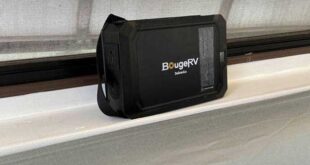If you have an interest in modern technology, odds are you’ve gotten familiar with what 3D printing can do. You’ve likely seen demo videos, heard about some cool applications and accepted the idea that 3D printing may one day mass-produce everything from homes to fast food. Curiously enough though, one fun aspect of 3D printing that often goes overlooked is the potential for personal, just-for-fun use.

Sure, there are people here and there who have been making use of their own 3D printers for years now, from artists experimenting with sculpting techniques to gaming enthusiasts building their own figurines. But it’s fair to say most of us still don’t really think of 3D printing as a consumer technology. That may change in the near future, however, and the following are some key factors to keep in mind if and when it does.
Voice Commands
A past article here discussed the idea of controlling robotic vacuum cleaners via Amazon’s “Alexa” – providing vocal instructions for a machine to follow. The use of this technology in a vacuum cleaner speaks to the idea that vocal assistants are becoming more sophisticated and being used for a greater variety of purposes. And recently, 3D printing has been mentioned as yet another potential avenue for the technology.
What this means specifically is hard to say, and may depend on the specific 3D printer at hand, and its capabilities. The general idea, though, is extremely promising for personal use of these printers. Just imagine being at home, feeling a need for a given product, and simply calling to your 3D printer to create said product. Naturally there will be some limitations, but this basic function is possible, and will likely be available to consumers before too much longer.
Potential For Mass Production
For an individual consumer, 3D printing can represent limitless creative potential – and possibly even a business opportunity. For instance, we mentioned above that some people already create sculptures and figurines via the technology, and what’s to stop those people from selling them? The only issue, really, is that producing these items in any kind of volume takes a great deal of time and effort (not to mention material cost).
It’s for that reason that we’ll point out how 3D printing can actually work alongside a vaguely similar process known as injection molding. This process tends to serve more industrial services, but it can have its uses for anyone looking to turn a prototype (something 3D-printed, for instance) into a product line. In a guide to how injection molding works, Fictiv explains that preliminary designs can be validated, and individual molds can be created, before orders of up to several thousand items can be placed. So, in theory, an individual can use a 3D printer to create a product, use that product as the basis for a mold, and then order rapid-molded products that can become the foundation of a business.
Material Variety
Another important factor in the near-future adoption of 3D printers for personal use is that the number of materials that can be used in the process is still growing. Most of the time, when you see examples of 3D-printed materials, they look to be made of plastic, and usually are (or are at least some sort of plastic hybrid). However, that doesn’t mean that such materials will be your only options.
Covering some of the large-scale advancements in 3D printing technology we’ve seen of late, Nature made a point of highlighting the fact that scientists are working on finding ways for new materials to work, and in some cases even creating them. Maybe the most important development we’ve already seen in this vein is that some 3D printers can now handle certain metals. But it’s likely that another year from now there will be even more possibilities. Individuals using their own 3D printers will have more options than they may expect.
Downloadable Files
The main hurdle for people who would like to be printing their own products but aren’t doing so yet is sometimes that said people don’t feel confident creating designs. Every 3D-printed item has to be based on a digital design of some kind, and naturally the more complex the item is meant to be, the more difficult the rendering can be to make. What many don’t realize, however, is that there are already large online collections of printing files that can be downloaded.
Open Education Database took a look at some of the best platforms out there that are supplying these downloads, and it’s clear there are a ton of options. Of course, the perfect design might not always be available. But there’s a lot to sift through, and ultimately the availability of these design files can help a lot of people get started with 3D printing.
Right now, the truth is that there’s very little keeping 3D printing from becoming a household technology, and something people start to have fun with on their own. And when the technology does catch on in this way, these will be among the factors that accelerate its use.
 Technology News, Reviews and Buying Guides review, monitor review, tablet review, laptop review, mobile review, smartphone review, buying guide,
Technology News, Reviews and Buying Guides review, monitor review, tablet review, laptop review, mobile review, smartphone review, buying guide,


